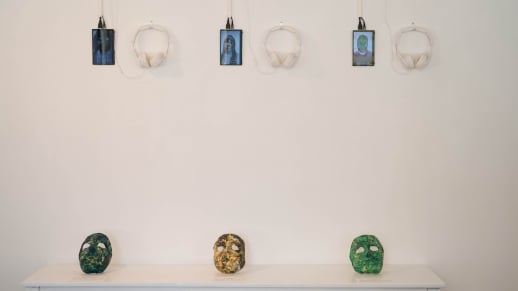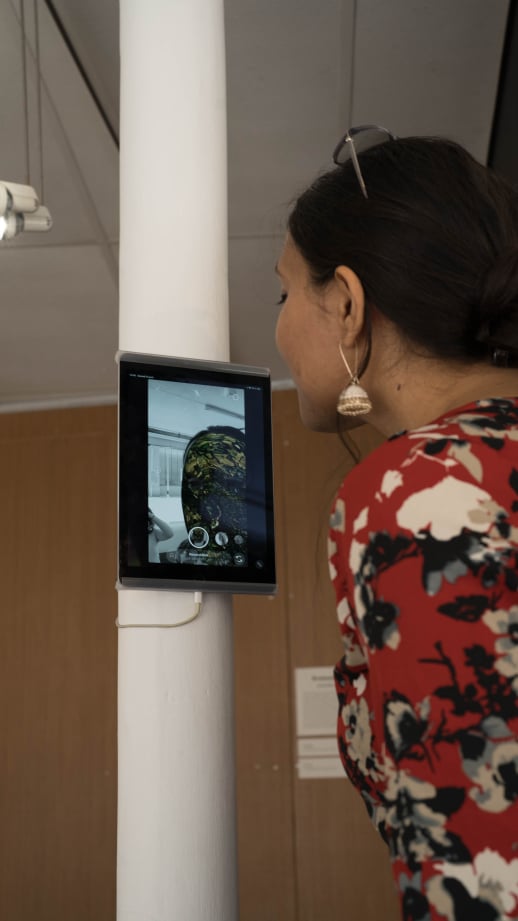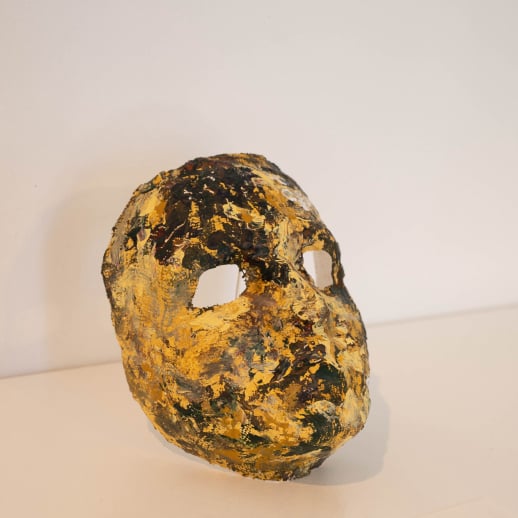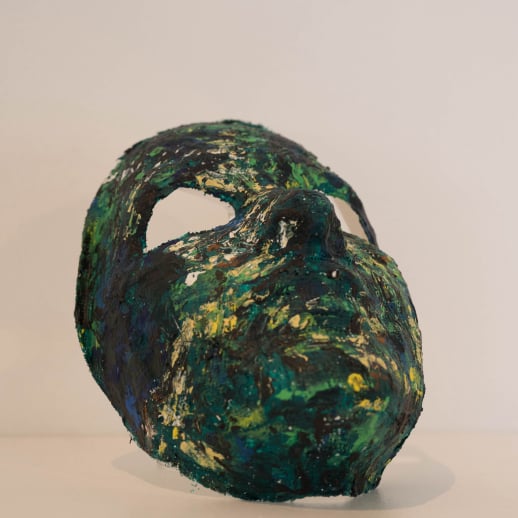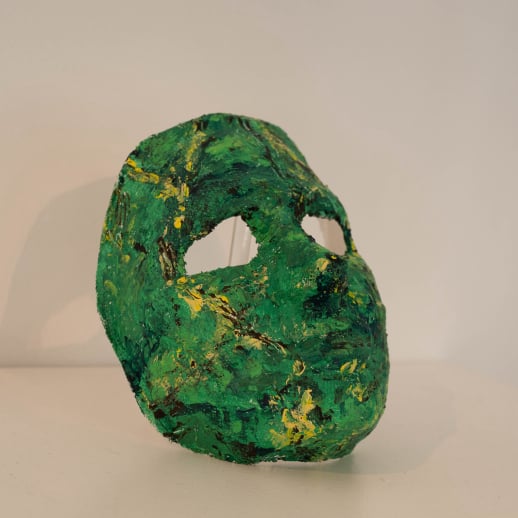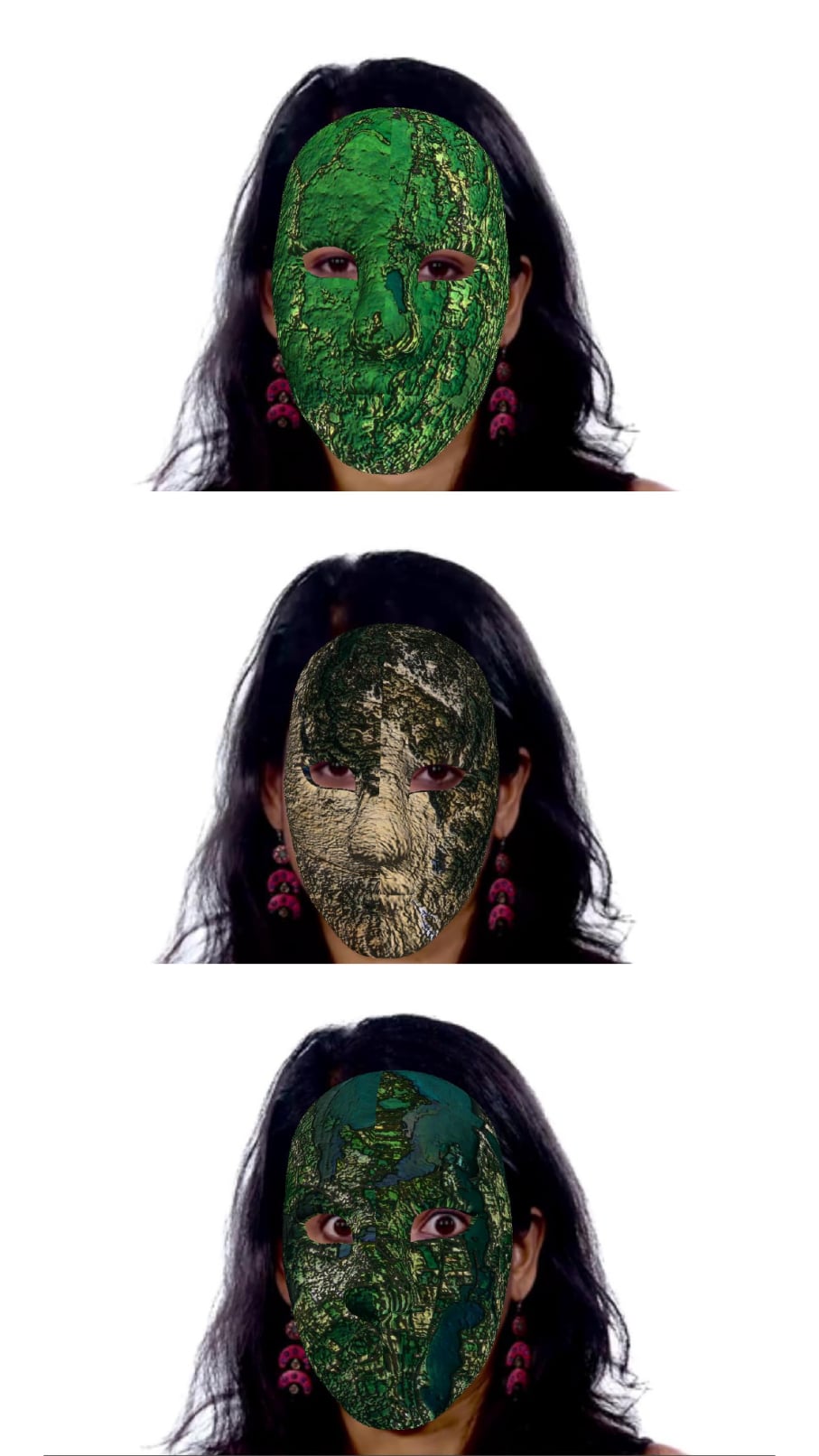
Augmented Reality Documentary
2024
For eons we as a species have explored terrain, as humans impose their presence on the face of earth. In this artwork, the earth imposes its presence upon the face of humans. Since the birth of agriculture-based civilisations, human have identified deeply with land and its ownership, roots of both socio-political power and nationhood. In the globalised digital world, geographical belonging is an increasingly obsolete concept. Our growing detachment from, lack of allegiance and loyalty to “our land” has brought forth a new kind of identity, an unchartered terrain of human belonging, a “Terra Incognita”. This woven together with the historic role of masks, objects of simultaneous concealment and revelation, forms the foundation of this artwork.
Every migrant, at some point, has come across this question “Where are you from?” This reflects the intrinsic human bias of superimposing geographical location on identity. Our sense of belonging and sense of what consists "home" are often deeply associated with a certain place and its culture. This piece is inspired from Krzysztof Wodiczko’s Ægis: Equipment for a City of Strangers (1999–2000) where a scripted conversation between an immigrant and local upholds the repeated question from the latter to the former, “Where are you from?”.
This Augmented Reality documentary explores the notion of psychogeographical identity through a series of “faceless interviews”. The city of Paris is home to an extensive diaspora from all corners of the world. The artist has interviewed several migrants (first or second generation) of diverse nationality living in the city asking them three questions: When someone asks you "Where are you from?", what do you reply? What makes you feel a sense of belonging to this place? If not with this place, where, what or who do you truly feel a belonging to? Based on their answers she has built digital masks of terrain obtained from satellite imagery, using the Meta Spark AR studio software, thereby superimposing the terrain of their belonging on the face of each person. Along with the video documentation are displayed analog versions of these masks, created by casting the face of the interviewee in plaster and painting the terrain over it in acrylics.
The documentary is in essence a collage of these personal revelations of selfhood transformed into a visual metaphor. It reflects upon the dichotomy of our digital and physical presence in the modern world. By masking the face of the interviewee, it breaks the stereotypical format of an interview. This way, it acts as a commentary on surveillance, of terrain and face recognition. The ubiquitous role of satellite imagery to hide the face symbolises the constant surveillance that shadows our identity in this age.
The second part of this artwork is an interactive installation, where viewers are welcome to try out the filters used by the interviewees, but this time, they embrace complete anonymity as the mask emerges from the terrain, thus revealing neither face nor body of the user. The filter incorporates various interactive effects of water, fire and air, symbolising the interaction of the fundamental elements in the context of geographical belonging. To make the artwork site-specific as a part of the exhibition "Floating Homelands" at Espace Usanii in Nevers, France, the artist has built also a filter with the mask of Nevers, France in the same format as the documentary filters. Residents of Nevers are welcome to use the filter and record their own story of belonging to the place.
